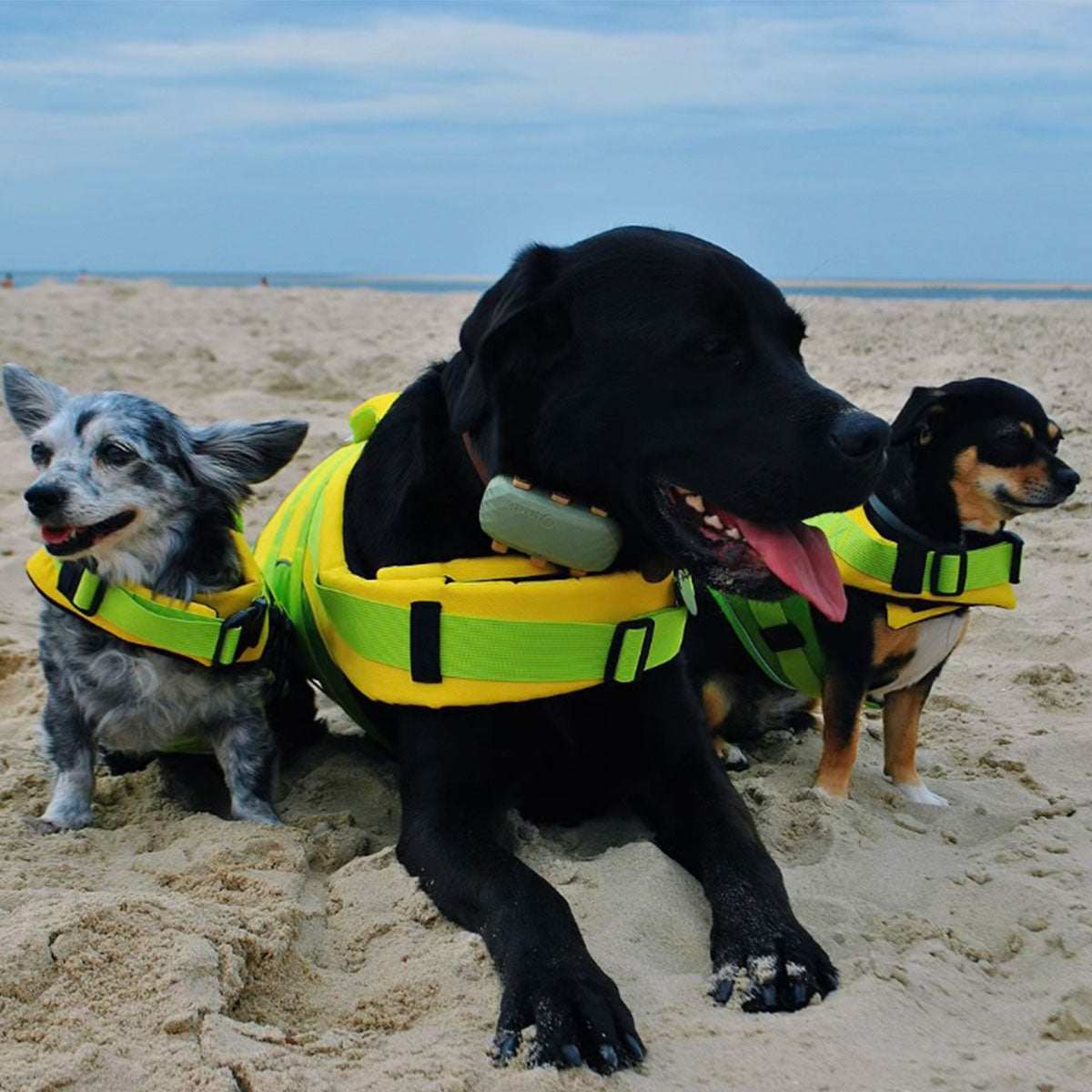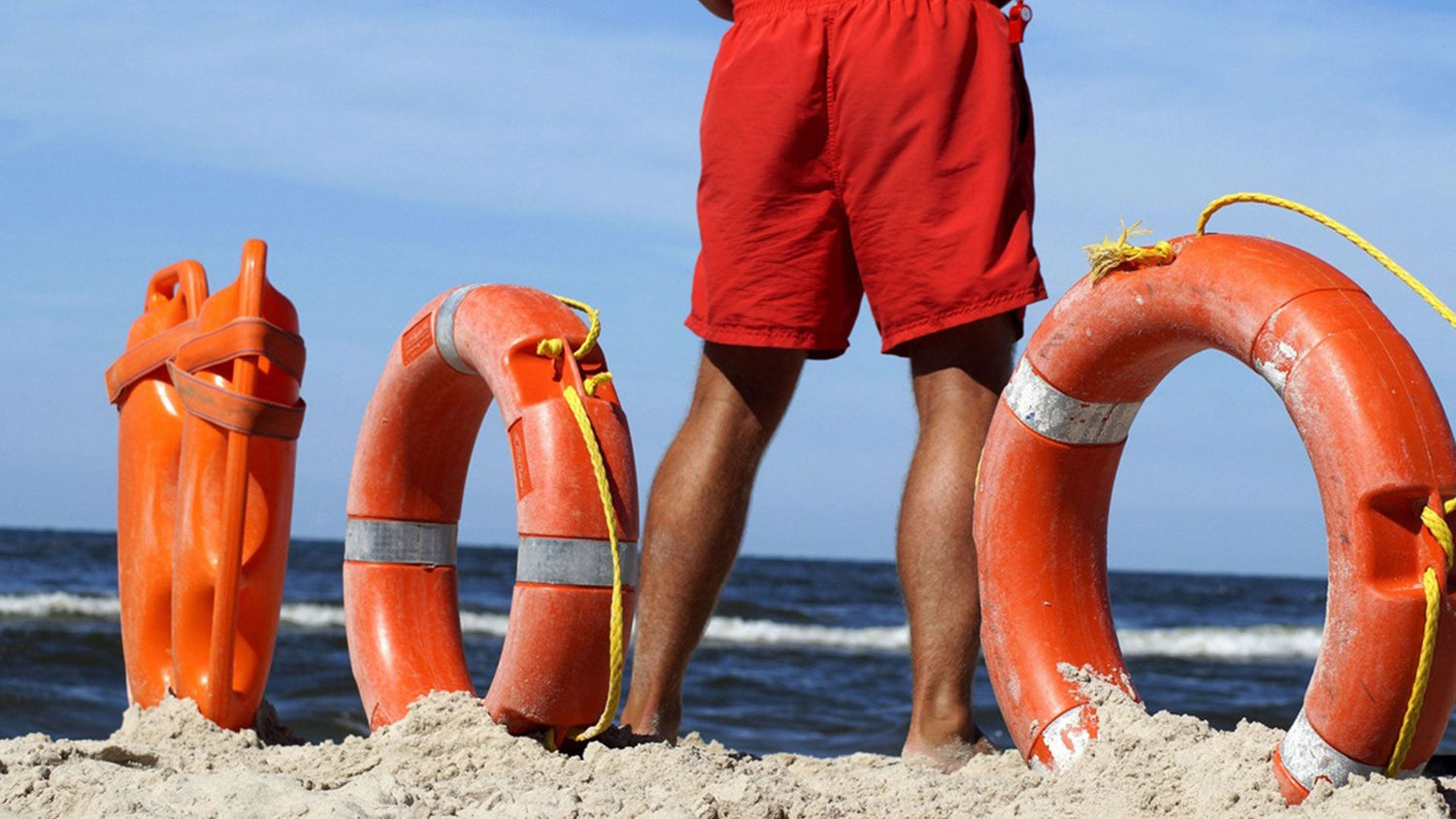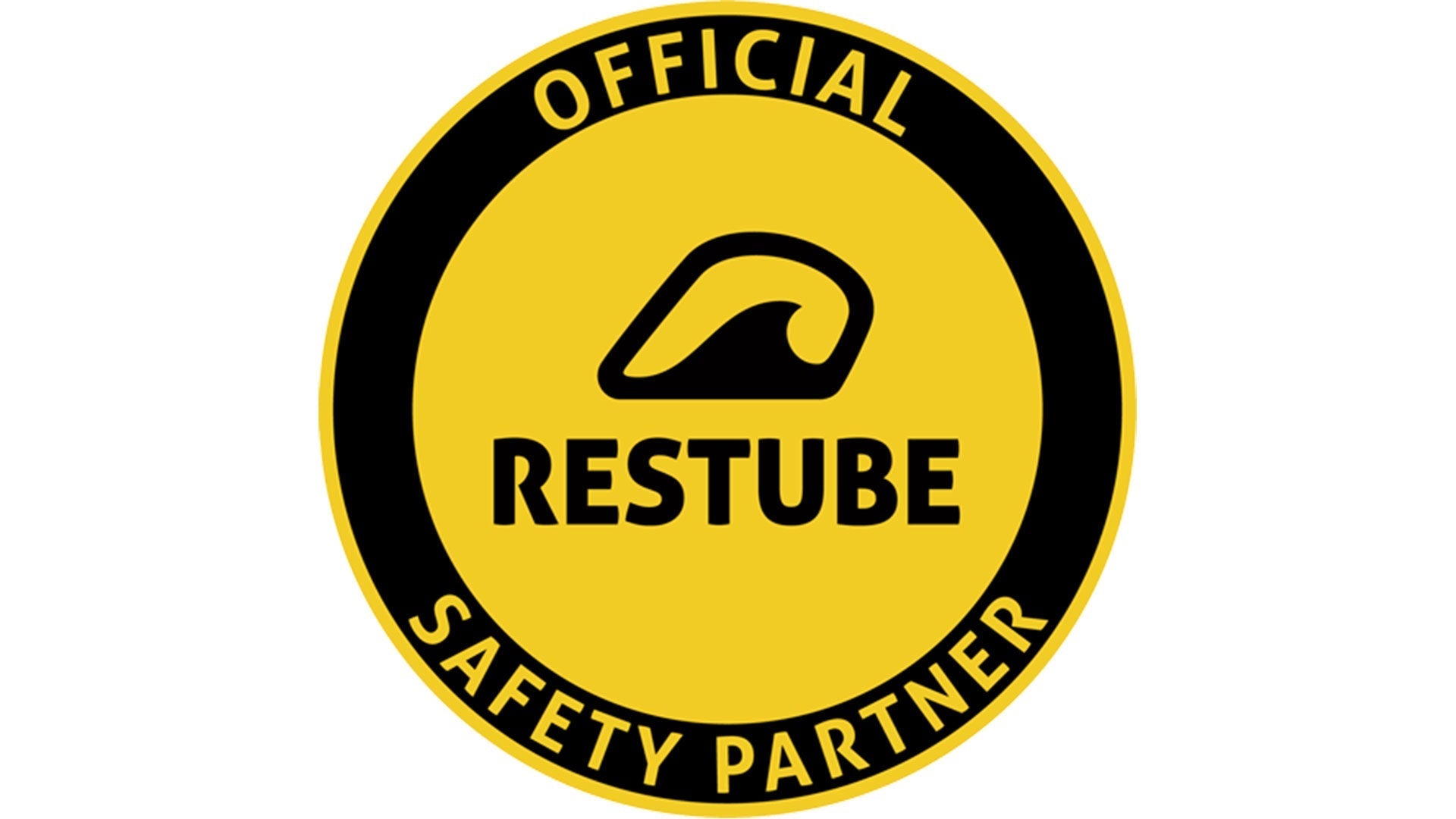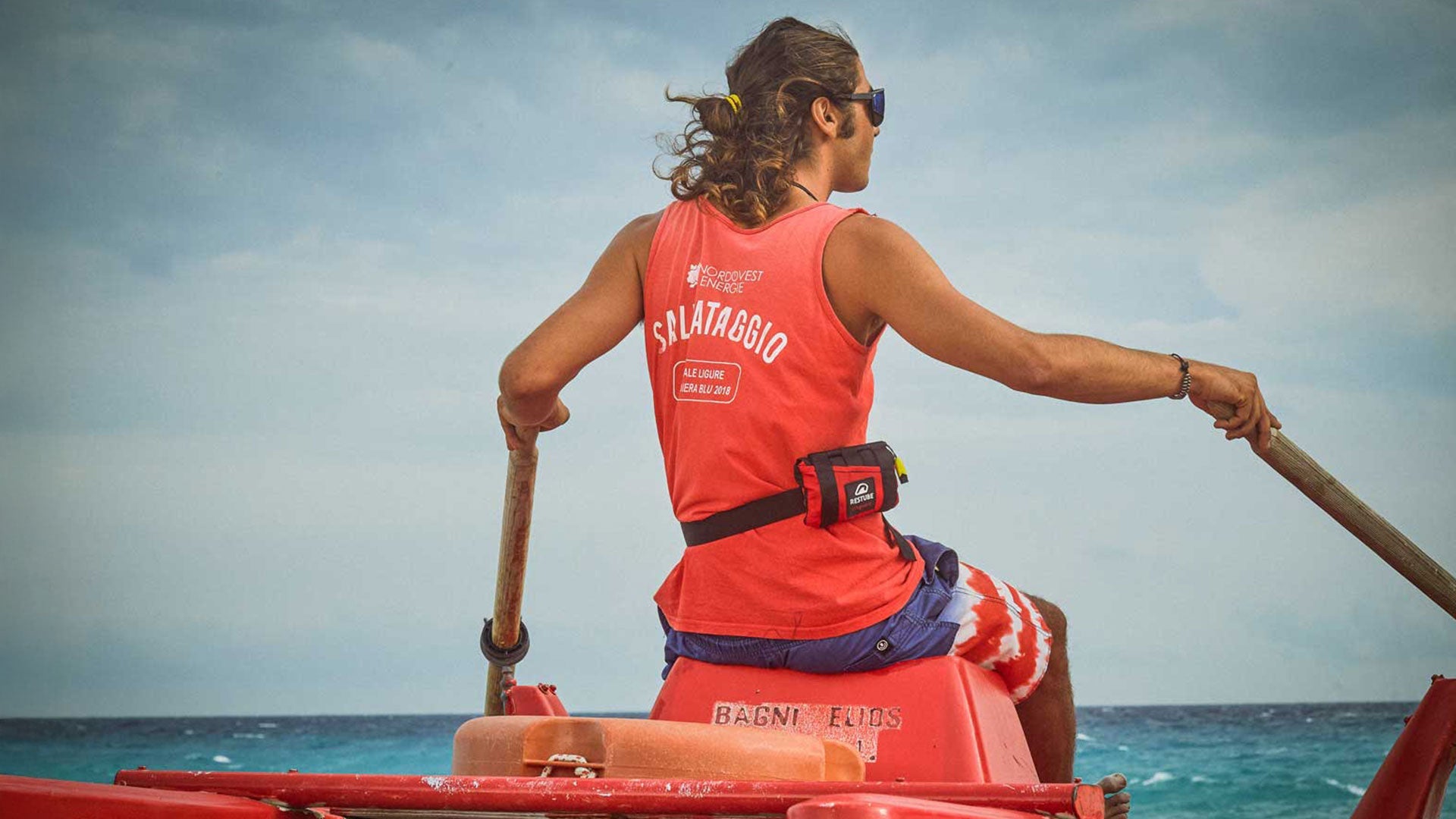And what kind of rescue cans are available for swimmers?
When swimming, stand-up paddling (SUP), or on a boat, one needs to be aware of possible dangers. A rescue can is a safe bet. Making preparations and having the right equipment protects your own personal safety as well as others when in serious trouble. Rescue cans are often used and very effective, especially when saving others.
In the following article, we provide important information about rescue cans, their use, and the different types available. We also talk about alternatives to the “classic” rescue can and what they have to offer to ensure safety, especially for swimmers.
Content:
- What is a rescue can?
- Why does it make sense to carry a rescue can when in the water?
- What are the systems and which rescue cans are available for swimmers and other water-related sports?
What is a rescue can?
Most people know rescue cans from TV. The rescue can is Malibu lifeguards’ symbol, well known from the popular TV show Baywatch. The series’ stars Pamela Anderson, David Hasselhoff, Carmen Electra, and Dwayne “The Rock” Johnson always carry the flashy red torpedo-like Baywatch buoy.

A rescue can is a piece of lifesaving equipment used when rescuing in water. They are a very effective tool ensuring safety during an emergency.
The Baywatch rescue can at a glance
- Length: 60cm (23.6 inches), Diameter: 15cm (6 inches) with two handles
- Weight: about 1000 grams (2.2 lbs)
- Rigid plastic container, partially foamed
- Somewhat bulky, needs lots of space
- Using it properly requires practice; lifeguard training is recommended
Why is it reasonable to carry a rescue can with you?
Having buoyancy always makes sense, regardless of fitness level or swimming ability. Water conditions such as currents, waves, and wind can change rapidly, causing panic. Panic depletes energy quickly, increasing the risk of drowning.
A buoyancy device such as a rescue can or inflatable tube can ease the situation immediately, helping you stay afloat, conserve energy, and regain control. You may then swim back calmly or wait for help.

Rescue cans are an essential piece of equipment for lifeguards. Many rescue organizations include them in their basic equipment. They simplify the rescue process by providing buoyancy to a drowning victim, enhancing the rescuer’s safety.
The DLRG’s rescue cans
The German association DLRG also uses rescue cans. In this video, they demonstrate how to use the rescue can in an emergency.
Are there certain standards for rescue cans?
No, there are no universal standards or CE markings for rescue cans. Each organization adopts the most suitable solution based on environmental factors such as open sea, rivers, lakes, shallow water, waves, or currents. Different situations require different approaches.
What are the alternatives to the classic rescue can?
The Baywatch rescue can is designed for external rescue, but its size makes it bulky and impractical for some activities. Inflatable buoys are a great alternative, as they are compact when deflated and easy to carry.

What is Restube and why isn’t it a traditional rescue can?
The Restube system is designed for personal safety in the water. Unlike a rescue can, Restube is carried at all times and can be instantly inflated using a CO2 cartridge when needed. It provides immediate buoyancy, allowing the user to stay afloat, regain energy, and call for help.

Restube at a glance
- Yellow flotation buoy made of life-vest material
- Provides enough buoyancy to keep you afloat
- Extremely compact when packed
- CO2 cartridge can be replaced after use
- Can be manually inflated
- Does not interfere with water activities
- Different versions available for various applications
Which Restube version is best for me?
Visit the Restube website to find the right product for your water activity. If you have questions, contact: hello@restube.com
¡Encuentra tu Restube!
Find out which Restube is right for your water activity in just a few steps!
Is Restube suitable for professional rescue?
Many professional lifeguards use Restube for additional buoyancy. Depending on the region and standard rescue techniques, different rescue cans and flotation devices are used. In addition to the Baywatch buoy, a rescue strap made of soft rubber foam is commonly used.

RESTUBE has developed a special system for professional lifeguards in cooperation with the Swiss Lifesaving Association SLRG. Today, more than 5000 Restube lifeguards are in use worldwide.
Have a safe and great time in the water!
Your Restube team




